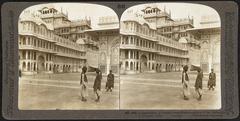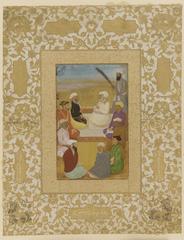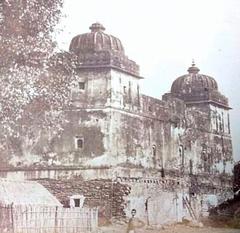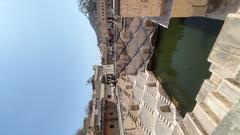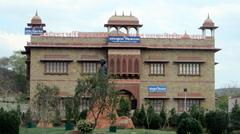
Birla Mandir Jaipur: Visiting Hours, Tickets, History, and Cultural Significance
Date: 04/07/2025
Introduction
Birla Mandir Jaipur, also known as the Laxmi Narayan Temple, stands as one of Jaipur’s most illustrious landmarks, blending spiritual devotion, architectural innovation, and cultural inclusivity. Commissioned by the Birla family and inaugurated in 1985, this white marble temple is dedicated to Lord Vishnu and Goddess Lakshmi. Set against Moti Doongri Hill on Jawahar Lal Nehru Marg, Birla Mandir is not only a sacred space for worship but also a vibrant center for cultural festivities and artistic heritage. Its open-door policy, accessible facilities, and inclusive ethos make it a must-visit for devotees, history buffs, and travelers alike (Jaipur Tourism, Mantra Puja, TticketPricing).
Contents
- Historical Background
- Origins and Patronage
- Construction Timeline and Inauguration
- Architectural Highlights
- Religious and Cultural Significance
- Deities and Daily Rituals
- Festivals and Celebrations
- Symbolism and Interfaith Harmony
- Visiting Hours and Tickets
- Accessibility and Travel Tips
- Nearby Attractions
- Special Events and Guided Tours
- Visitor Experience and Etiquette
- FAQs
- Conclusion
Historical Background
Origins and Patronage
Birla Mandir was conceived as a modern temple rooted in devotion and philanthropy. The land was provided by the Maharaja of Jaipur for a symbolic sum, underscoring a partnership between Jaipur’s royal family and the Birla family to promote cultural and religious heritage (mantrapuja.com, carhirejaipur.com). The Birlas, renowned Indian industrialists, envisioned the temple as a place that would foster social service and interfaith harmony.
Construction Timeline and Inauguration
Construction began in 1977, with the temple opening its doors to the public in February 1985. Final enhancements continued until 1988, ensuring a blend of traditional craftsmanship and modern sensibilities (carhirejaipur.com, praveenmusafir.com). The inauguration was attended by dignitaries and devotees, marking the start of the temple’s spiritual journey (mantrapuja.com).
Architectural Highlights
Birla Mandir is celebrated for its pristine white marble construction, Nagara-style architecture, and intricate carvings (mantrapuja.com). The temple’s three domes symbolize India’s major faiths—Hinduism, Islam, and Christianity—reflecting a vision of religious harmony (carhirejaipur.com).
Key features include:
- Marble Pillars and Entrances: Adorned with detailed carvings, gold-embellished doors, and decorative jali work.
- Sanctum and Main Hall: Houses marble idols of Lord Vishnu and Goddess Lakshmi, illuminated by stained glass windows that depict scenes from Hindu epics.
- Outer Facade: Features carvings of religious and philosophical figures from around the world, including Christ, Buddha, Socrates, and Zarathustra, emphasizing universal brotherhood.
- Gardens and Illumination: Surrounded by manicured gardens and lit beautifully at night, the temple offers a tranquil retreat (tafritravels.com).
- Museum: The temple complex also includes a museum showcasing Birla family artifacts and Indian art (jaipurtourism.co.in).
Religious and Cultural Significance
Deities and Daily Rituals
Dedicated to Lord Vishnu (Narayan) and Goddess Lakshmi, the temple is a center for daily worship and aarti ceremonies. Devotional activities are held in the early mornings and evenings, inviting both devotees and visitors to participate (rajasthanplaces.com).
Festivals and Celebrations
Birla Mandir is renowned for its vibrant celebrations during major Hindu festivals like Janmashtami, Diwali, and Holi. The temple is adorned with lights and decorations, hosting prayers and cultural performances that attract thousands (praveenmusafir.com, mantrapuja.com).
Symbolism and Interfaith Harmony
The temple’s design and artwork reflect a message of religious tolerance and unity. Carvings of figures from various faiths alongside Hindu motifs underscore the Birla family’s vision of inclusivity (medium.com).
Visiting Hours and Tickets
- Summer: 6:00 AM – 12:00 PM, 3:00 PM – 9:00 PM
- Winter: 6:30 AM – 12:00 PM, 3:00 PM – 8:30 PM
- Afternoon Closure: 12:00 PM – 3:00 PM (all seasons)
- Aarti Timings: Morning (6:00/6:30 AM), Evening (7:00 PM)
- Entry Fee: Free for all visitors (TticketPricing, Travejar)
Accessibility and Travel Tips
- Location: Jawahar Lal Nehru Marg, Tilak Nagar, Jaipur (IndiaOngo)
- Getting There: Easily accessible by car, taxi, auto-rickshaw, and public buses. Jaipur Railway Station (5–6 km) and Airport (12 km) are nearby.
- Facilities: Wheelchair access, ramps, clean washrooms, shoe deposit, drinking water, and security surveillance are provided.
- Dress Code: Modest attire is mandatory; shorts, sleeveless tops, and revealing clothes are not permitted.
- Photography: Allowed in exterior areas but prohibited inside the main prayer hall (IndiaOngo).
Nearby Attractions
- Moti Doongri Ganesh Temple: Adjacent to Birla Mandir, famous for its unique design.
- Albert Hall Museum: Showcasing Rajasthani heritage.
- Hawa Mahal, Jantar Mantar, City Palace: All within 6–7 km, ideal for a day’s sightseeing (JaipurTourism).
Special Events and Guided Tours
- Major Festivals: Janmashtami and Diwali are celebrated with grandeur, featuring special prayers and decorations.
- Guided Tours: Available through local agencies and the temple visitor center; advance booking is recommended.
Visitor Experience and Etiquette
- Participation: All visitors are welcome to join daily rituals and aartis.
- Conduct: Maintain silence, avoid touching idols, and follow staff instructions.
- Souvenirs: Handicrafts and religious mementos are available at on-site shops (jaipurtourism.co.in).
- Best Time to Visit: October to March offers the most pleasant weather.
Frequently Asked Questions (FAQs)
Q: What are the Birla Mandir Jaipur visiting hours?
A: 6:00 AM–12:00 PM & 3:00–9:00 PM (summer); 6:30 AM–12:00 PM & 3:00–8:30 PM (winter).
Q: Is there an entry fee?
A: No, entry is free for all visitors.
Q: Can non-Hindus visit the temple?
A: Yes, visitors of all faiths are welcome.
Q: Is Birla Mandir wheelchair accessible?
A: Yes, ramps and accessible pathways are provided.
Q: Where can I take photographs?
A: Photography is allowed in the gardens and exterior areas, but not inside the main prayer hall.
Q: What is the best time to visit?
A: Early mornings or evenings, particularly from October to March.
Conclusion
Birla Mandir Jaipur is a testament to India’s spiritual heritage, architectural brilliance, and ethos of unity. Its free entry, accessible location, and welcoming environment make it ideal for both spiritual seekers and cultural explorers. Plan your visit to experience the temple’s tranquil atmosphere, take part in vibrant festivals, and explore Jaipur’s nearby historic attractions. For more in-depth guides and updates, download the Audiala app and stay connected with Rajasthan’s culture.
Sources
- Mantra Puja
- Jaipur Tourism
- Tafri Travels
- Travejar
- TticketPricing
- IndiaOngo
- Praveen Musafir
- Rajasthan Places
- Medium - Rajasthan Route
- Jaipur Taxi Services
- Car Hire Jaipur


